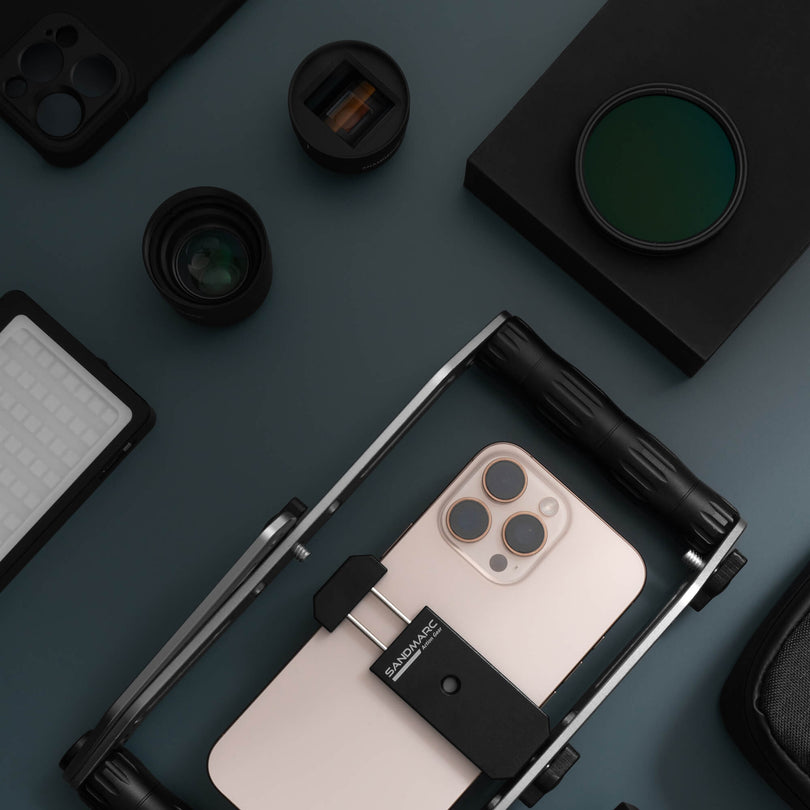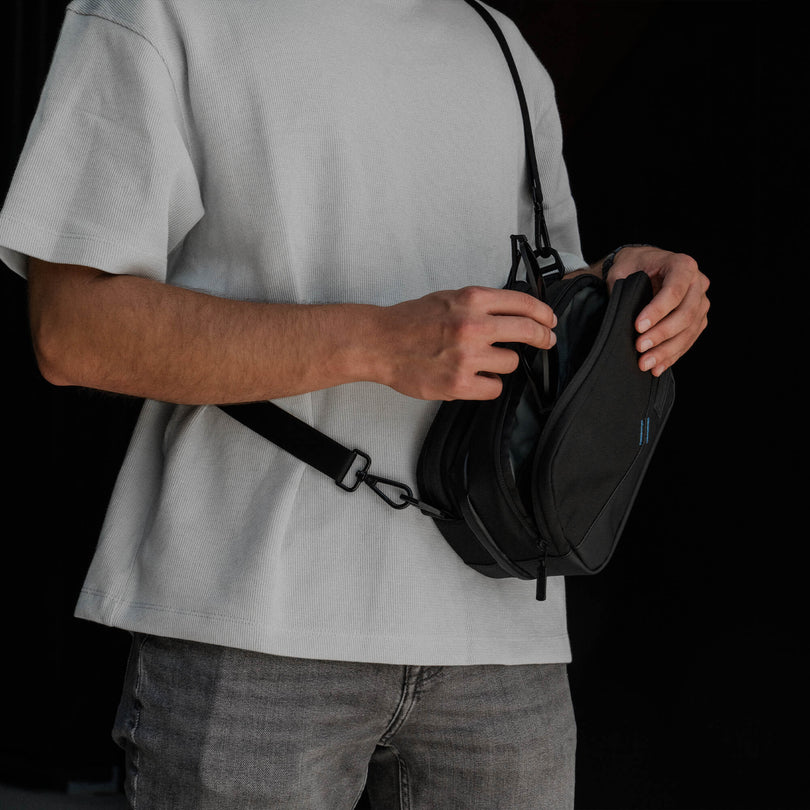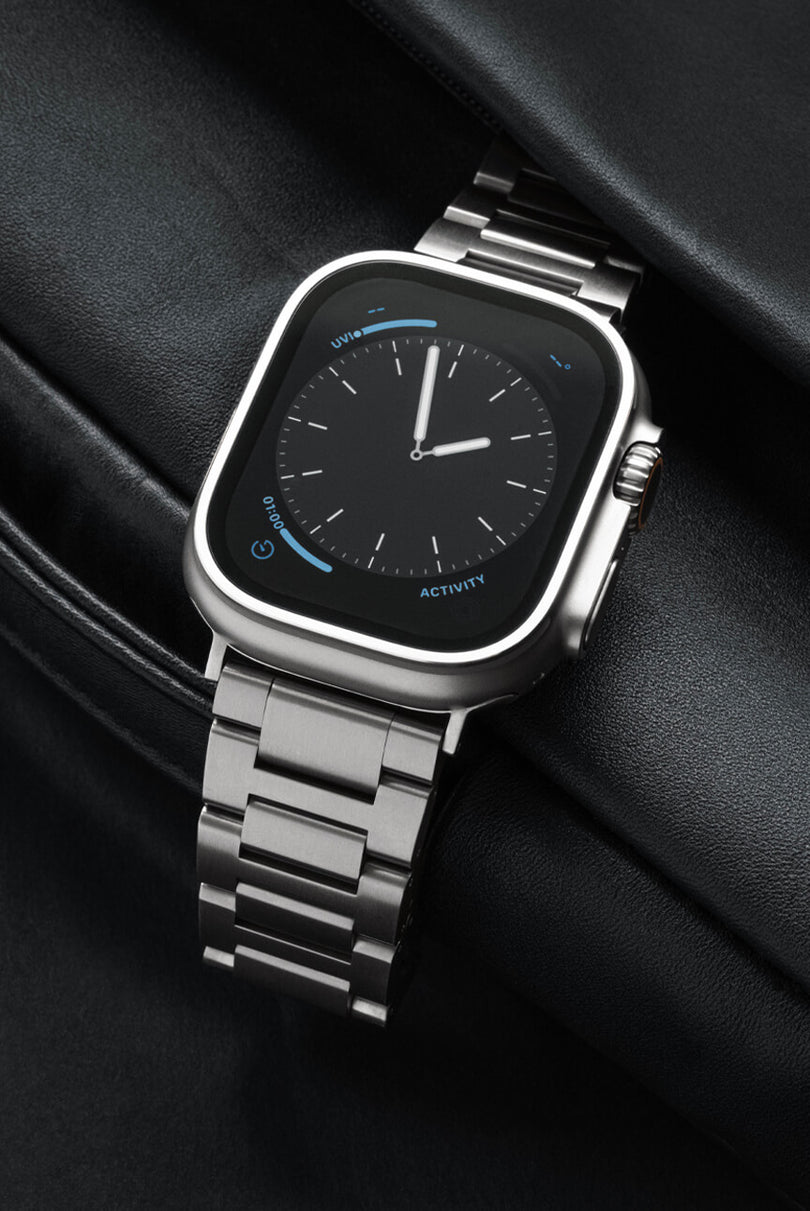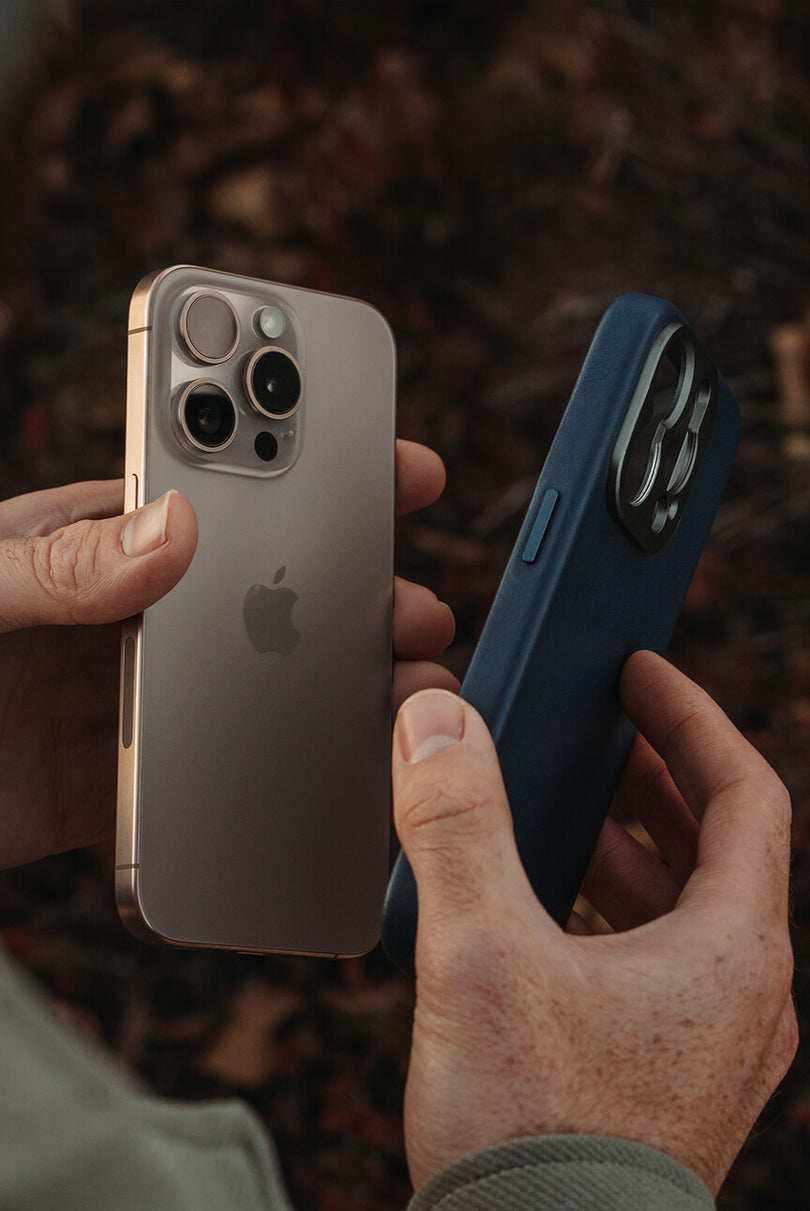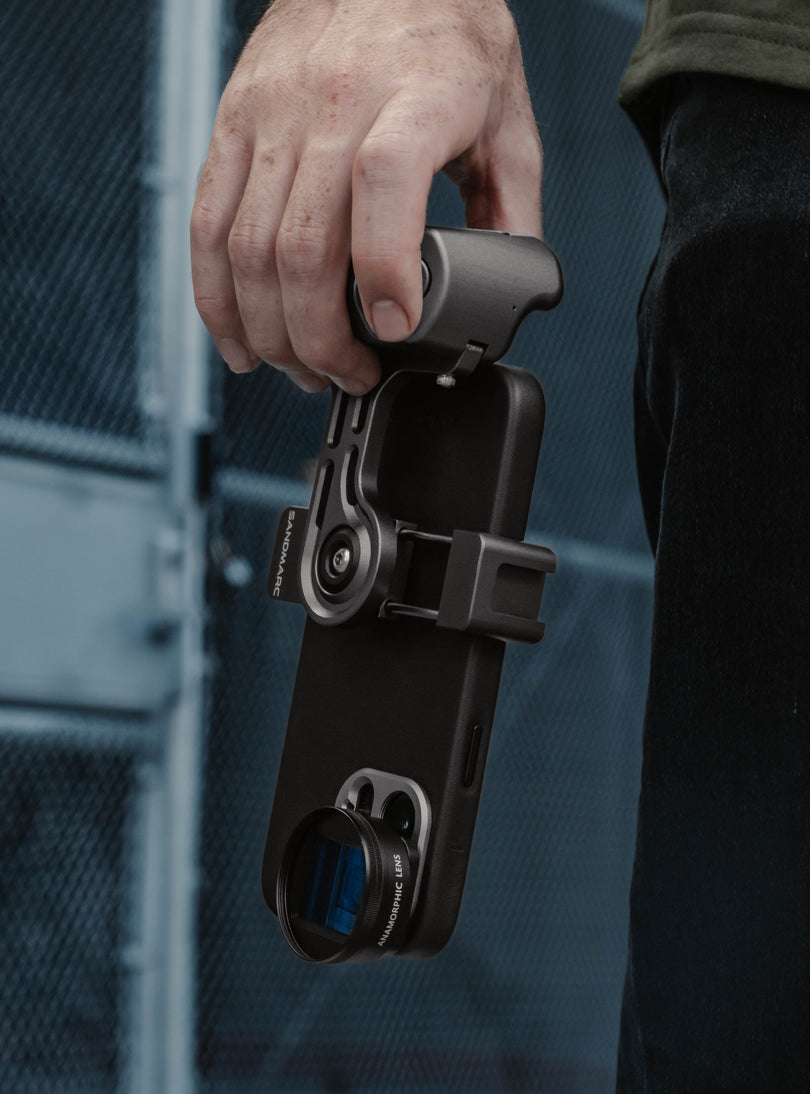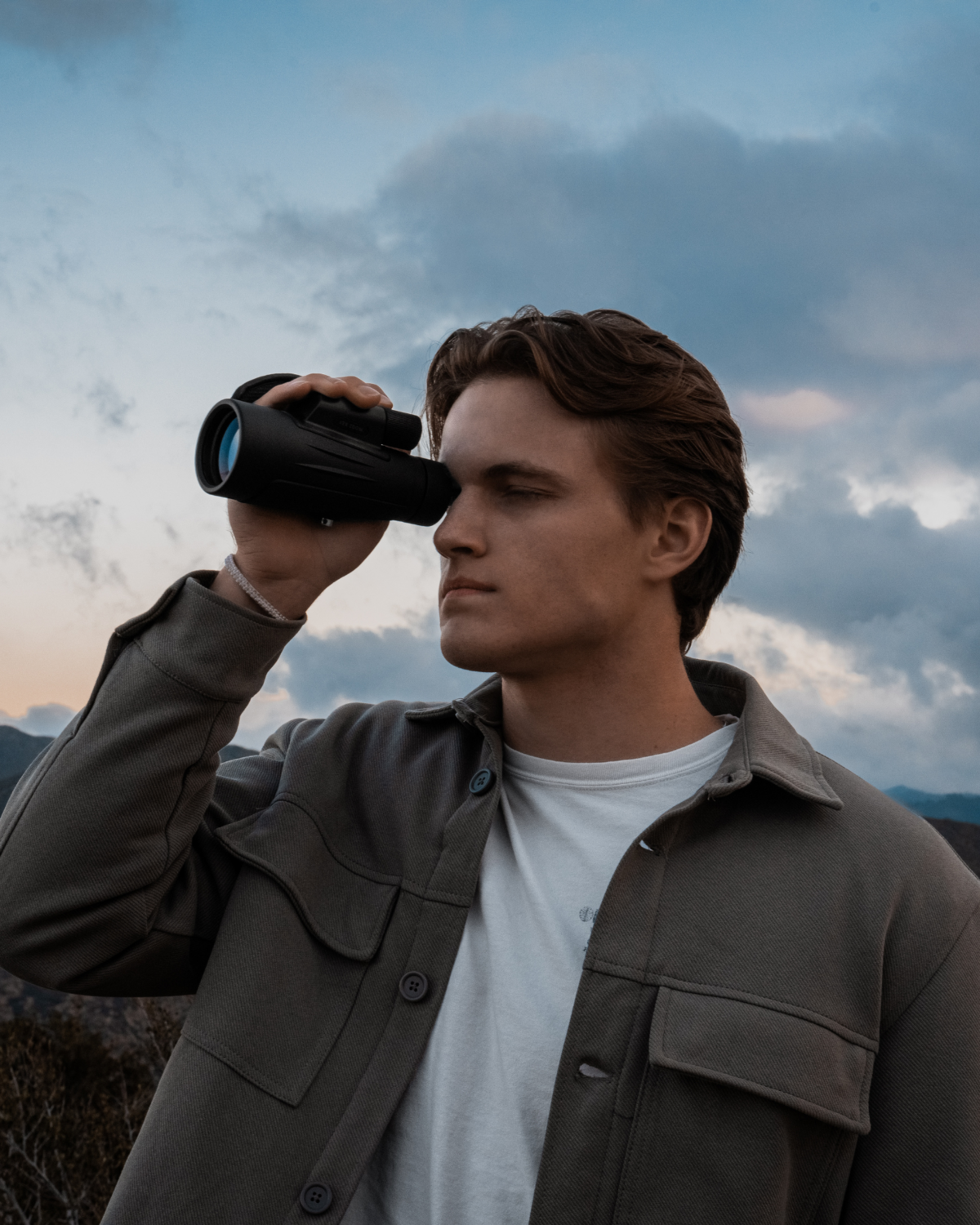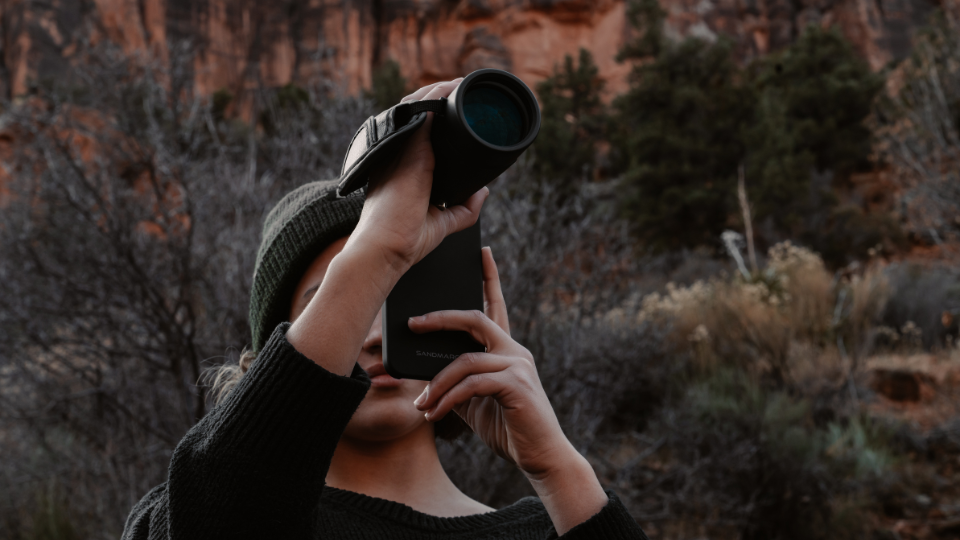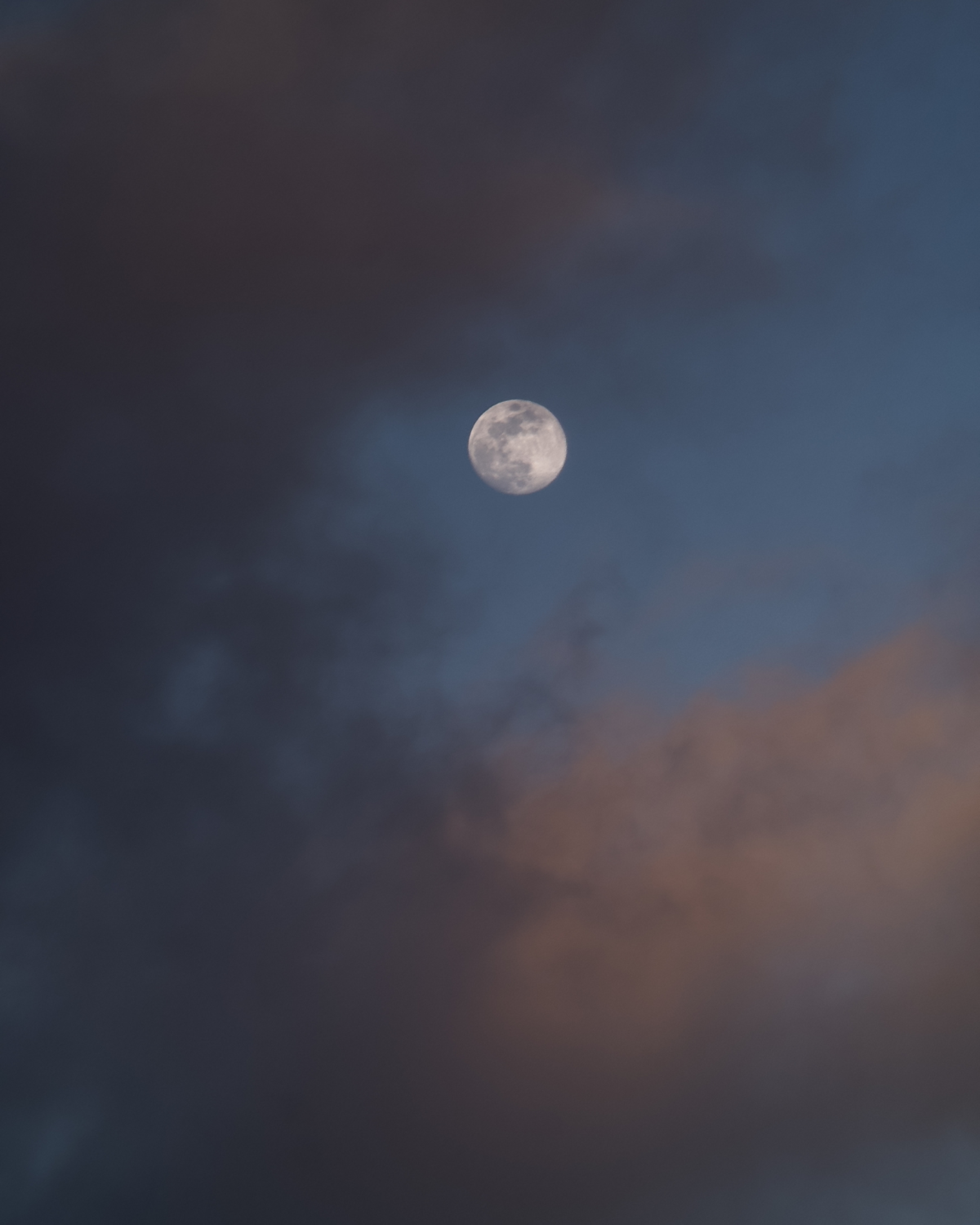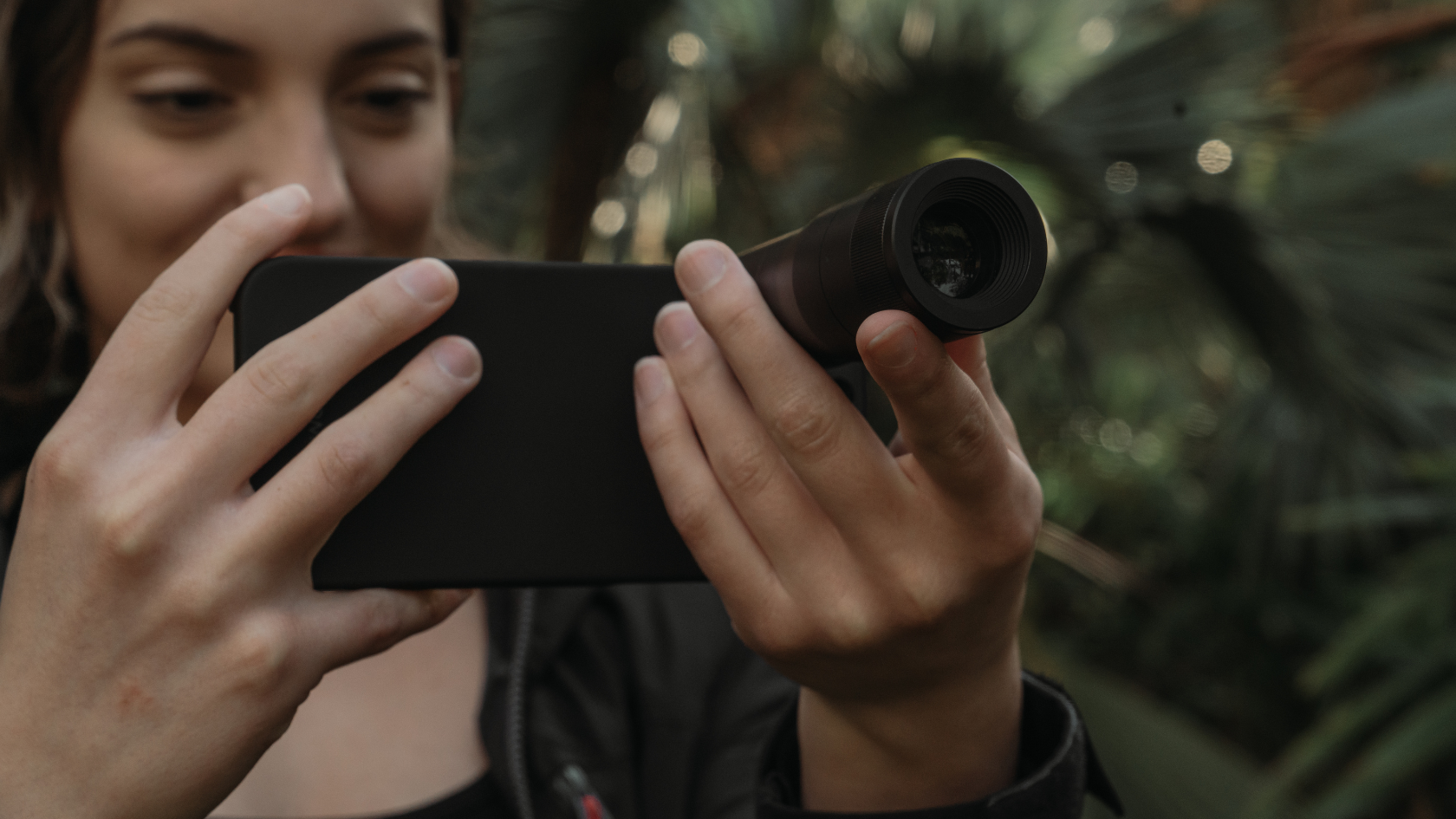Monocular, Binocular, and Telephoto 6x: What is the Difference?
We recently launched a Binocular, Monocular and Telephoto 6x optical lens. With similar functions it can become confusing how to best utilize each. Let’s focus in on the differences between the SANDMARC Monocular, Binocular, and Telephoto 6x lens.
Let's Look at the Specifications
Comparing the specifications is a good place to begin when differentiating the three products. Magnification, field of view, and weight are three specifications to pay attention to when highlighting key differences.
Specifications
☉ Objective Lens Diameter: 50mm
☉ Magnification: 10.5x
☉ Eye Relief: 18mm
☉ Waterproof: IPX6
☉ Field of View: 366ft / 1000 yards
☉ Interpupillary Distance: 56-74mm
☉ Height: 7 1/4 Inches
☉ Width: 5.1 Inches
☉ Weight: 1 lb 12 oz
☉ Magnification: 10.5x
☉ Eye Relief: 18mm
☉ Waterproof: IPX6
☉ Field of View: 366ft / 1000 yards
☉ Interpupillary Distance: 56-74mm
☉ Height: 7 1/4 Inches
☉ Width: 5.1 Inches
☉ Weight: 1 lb 12 oz
Specifications
☉ Objective Lens Diameter: 50mm
☉ Magnification: 12x
☉ Eye Relief: 17mm
☉ Waterproof: IPX7
☉ Field of View: 396ft / 1000 yards
☉ Interpupillary Distance: 56-74mm
☉ Height: 6 1/4 Inches
☉ Width: 3 Inches
☉ Weight: 1 lb 2 oz
☉ Magnification: 12x
☉ Eye Relief: 17mm
☉ Waterproof: IPX7
☉ Field of View: 396ft / 1000 yards
☉ Interpupillary Distance: 56-74mm
☉ Height: 6 1/4 Inches
☉ Width: 3 Inches
☉ Weight: 1 lb 2 oz
Specifications
☉ Magnification: 6X
☉ Height: 119mm
☉ Diameter: 37mm
☉ Weight: 7.6 oz (215g)
☉ Focus Distance: 16 ft - ∞
☉ Field of View Angle: 17°
☉ Height: 119mm
☉ Diameter: 37mm
☉ Weight: 7.6 oz (215g)
☉ Focus Distance: 16 ft - ∞
☉ Field of View Angle: 17°
First lets look at magnification, the Monocular has the highest magnification at 12x, then following is the Binocular with 10.5x magnification, and last is the Telephoto with 6x magnification. This tells us which product will allow us to see a distant object closer.
Field of view is not to be confused with wide angle view, which pertains to the Binoculars ability to cover both eyes allowing for easy tracking over a wider area. The field of view for the Binocular and Monocular are listed in yards, measuring length and the field of view for the Telephoto lens is listed in degrees, measuring angle as most camera lenses are.
Focusing on the weight, the Binocular is larger weighing 1 lb 12 oz, the Monocular is lighter weighing 1 lb 2 oz, and lastly the Telephoto Lens is the lightest and smallest weighing 7.6 oz. If compactness is important to you, the weight differences will help guide your decision making.
Field of view is not to be confused with wide angle view, which pertains to the Binoculars ability to cover both eyes allowing for easy tracking over a wider area. The field of view for the Binocular and Monocular are listed in yards, measuring length and the field of view for the Telephoto lens is listed in degrees, measuring angle as most camera lenses are.
Focusing on the weight, the Binocular is larger weighing 1 lb 12 oz, the Monocular is lighter weighing 1 lb 2 oz, and lastly the Telephoto Lens is the lightest and smallest weighing 7.6 oz. If compactness is important to you, the weight differences will help guide your decision making.
Binocular, Monocular and Telephoto 6x in Action
Now that you have had a breakdown on each product's technicalities, let's talk about ways to best utilize each.
Binocular
Binocular, stemming from the Greek root “bi-” meaning two, is a double barreled optical device used to observe distant objects. The double barrel feature is what allows for easy tracking of moving objects. With a wider angle view, you can see a wider area of space which enables you to not have to move your binoculars as much.
The binocular is also ergonomically crafted, allowing for comfort for long watching sessions. Whether your activity includes watching a moving object, or watching and waiting for long periods of time, the Binocular is your perfect companion.
Activities:
Bird watching
Whale watching
Stargazing
Hiking
Surveying Terrain
Features to Note:
Wide Angle View
Easily Track Moving Objects
Long Observation Sessions
The binocular is also ergonomically crafted, allowing for comfort for long watching sessions. Whether your activity includes watching a moving object, or watching and waiting for long periods of time, the Binocular is your perfect companion.
Activities:
Bird watching
Whale watching
Stargazing
Hiking
Surveying Terrain
Features to Note:
Wide Angle View
Easily Track Moving Objects
Long Observation Sessions
Monocular
Monocular, stemming from the Greek root “mono-” meaning one, is a single barreled optical device used to observe distant objects. The Monocular is light and compact, making it easy for quick spotting. The Monocular can be used for similar activities like the Binocular, but to a different degree.
Some people opt for the Monocular when they want to carry light, and prefer to only use it for surveying an area or spotting an object rather than an extended watching session. When the Binocular and Monocular are paired together you get optimal viewing scenarios.
Activities:
Bird watching
Whale watching
Stargazing
Hiking
Surveying Terrain
Features to Note:
Light
Compact
Single Handed Use
Casual Viewing
Some people opt for the Monocular when they want to carry light, and prefer to only use it for surveying an area or spotting an object rather than an extended watching session. When the Binocular and Monocular are paired together you get optimal viewing scenarios.
Activities:
Bird watching
Whale watching
Stargazing
Hiking
Surveying Terrain
Features to Note:
Light
Compact
Single Handed Use
Casual Viewing
Telephoto 6x
Telephoto, stemming from the greek root “tele-” meaning far, or distant, is a lens that is capable of taking photos of distant objects. The Telephoto Lens is not meant to be used to observe distant objects like the Binocular and Monocular.
The Telephoto 6x is an optical zoom lens, meant to take portrait shots of distant objects. Remember that the Telephoto is an optical lens add on to your iPhone that elevates the standard iPhone camera. Although it allows you to see far, just like any camera with zoom capabilities, you wouldn't use a camera's zoom feature solely for viewing distant objects.
Activities:
Wildlife Photography
Landscape Photography
Low Light Photography
Urban Photography
Portrait Photography
Features to Note:
Low Light Performance
6x Optical Zoom Lens
Adjustable Focus Wheel
Sharp Images
The Telephoto 6x is an optical zoom lens, meant to take portrait shots of distant objects. Remember that the Telephoto is an optical lens add on to your iPhone that elevates the standard iPhone camera. Although it allows you to see far, just like any camera with zoom capabilities, you wouldn't use a camera's zoom feature solely for viewing distant objects.
Activities:
Wildlife Photography
Landscape Photography
Low Light Photography
Urban Photography
Portrait Photography
Features to Note:
Low Light Performance
6x Optical Zoom Lens
Adjustable Focus Wheel
Sharp Images
Capturing images with the Monocular, Binocular and Telephoto 6x: What is the difference?
The Binocular and Monocular come with a patent-pending mount that allows you to easily attach to your iPhone.
This attachment gives you the ability to take photos of what you view through the Monocular and Binocular, so what is the difference between these ultra zoomed images and the Telephoto 6x?
This attachment gives you the ability to take photos of what you view through the Monocular and Binocular, so what is the difference between these ultra zoomed images and the Telephoto 6x?
It's important to note that the Binocular and Monocular are first optics meant for observing distant objects before they are considered to be camera lenses. The iPhone attachment allows viewers to see what you are seeing through your eyepiece alone. The images captured with the Binocular or Monocular will be clear, but the Telephoto optical lens is capable of pivoting when it comes to low light conditions and creating bokeh.
Shot on iPhone with Telephoto 6x
Follow along in the video below as we share more about what the Telephoto 6x is capable of like creating natural bokeh:

